 Leading Blog | Posts by Month |
 Leading Blog | Posts by Month |
11.30.10

LeadershipNow 140: November 2010 Compilation
Posted by Michael McKinney at 12:19 AM
11.29.10

The Bed of ProcrustesThe Bed of Procrustes: Philosophical and Practical Aphorisms is rich in intellectually satisfying and considered thoughts from the meditations of Nassim Nicholas Taleb. The title, based on the Procrustes of Greek mythology that stretched or chopped off the legs of guests to make them fit his bed, is analogous of his observation of the human tendency to try to make fit that which we understand and lop off that which we don’t. “We humans,” he writes, “facing limits of knowledge, and things we do not observe, the unseen and the unknown, resolve the tension by squeezing life and the world into crisp commoditized ideas, reductive categories, specific vocabularies, and prepackaged narratives, which, on the occasion, has explosive consequences.”His thoughts are mostly insightful, prophetic, humbling, disarming, or instructive and only occasionally sound like justifications. All are worth reading and ruminating over. They help us to face a world we frequently don’t understand. Here are a baker's dozen to get you started:
Posted by Michael McKinney at 12:53 AM
11.25.10

Our Contribution to the Human Spirit: Thanks-GivingI am certain that after the dust of centuries has passed over our cities, we, too, will be remembered not for victories or defeats in battle or politics, but for our contribution to the human spirit. Thanks-giving contributes to the human spirit and it can be shown in many unique ways. Ideas for thanks-giving in the workplace, the classroom and at home: Demonstrate your thankfulness by how you treat everyone you meet. Don’t let others feel small or stupid around you. Let them be smarter. Be generous with your praise and stingy with your criticism. Don’t give the answer. Show them how to find it. Help others find the strength in their weakness. Be civil. It shows others you appreciate them. Encourage others and applaud their efforts. Give others the room to grow. Complement the competition. Give your best self to others. Help others triumph. Share the good stuff. Walk your talk. Laugh. Listen. Say Thanks.
Posted by Michael McKinney at 12:07 AM
11.24.10

The Laws of CharismaEven though charisma is thought of as something intrinsic to the individual, a person cannot reveal this quality in isolation. It is only evident in interaction with those who are affected by it. Charisma is, above all, a relationship, a mutual mingling of the inner selves of leader and follower.Charisma is often thought to be something in your DNA. You either have it, or you don’t. But as Kurt Mortensen makes clear in The Laws of Charisma, it “is a trait that can be taught and mastered.” Charisma is about connecting with others. Mortensen defines it as “the ability to easily build rapport, effectively influence others to your way of thinking, inspire them to achieve more, and in the process make an ally for life.” Like leadership, it can be used positively or negatively. It depends on where the emphasis is: self or others. For example, he lists some of the differences between ethical and unethical uses of charisma:
Ultimately, charisma will only take you so far. Without character and competence, it is fleeting. Our greatest roadblock to developing charisma, Mortensen points out, is that we lie to ourselves. We think we are better than we are. We think our weaknesses aren’t that noticeable, and it gives us a false sense of security and no starting place from which to begin to make the improvements we need to make. Mortensen has created a self-assessment for 30 attributes that define a charismatic individual. Chapter by chapter, he takes you through each of these, describing them, showing how they are applied with real-world examples and what the counterfeit version of each looks like. For instance, passion is not hype or bouncing off the walls. It’s more like conviction that radiates from within. You may think you’re coming across as confident, but you could be perceived as either arrogant, cocky, or condescending. Arrogance is about self, and confidence is about others. Control is not power. It creates short-term compliance even as it drains the life out of people and creates long-term resentment. The attributes are organized into four areas: The elements of presence—how to radiate charisma through passion, confidence, congruence, optimism, positive power, energy and balance, and humor and happiness. Tapping into and developing the core inner qualities of charisma: self-discipline, competence, intuition, purpose, integrity, courage, creativity, and focus. Delivery and communication—how to use presentation skills, people skills, influence, storytelling, eye contact, listening, and rapport to speak with conviction and get heard. Empowering others through inspiration, esteem, credibility, motivation, goodwill, vision, empathy, and respect—the components of contagious cooperation. Other things to consider are how you communicate (both verbally and non-verbally), how you look, and your feelings and moods. Each chapter is well thought out as he looks at each attribute from different angles. Each attribute is just a piece of the total charisma picture. The more you develop, the better you will be able to connect with others. While some of these attributes will come naturally to you, some will take a concerted effort. Taken as a whole, these thirty attributes are overwhelming. Take them one at a time. It’s a lifelong process. 
Posted by Michael McKinney at 12:31 AM

Seven Charisma KillersIn The Laws of Charisma, Kurt Mortensen lists a number of things we do that repel people. He writes, “These mistakes are silent charisma killers. Most people will never say anything to you that will alert you to the fact that they are being repelled. They are more comfortable lying to you so that they don’t hurt your feelings. They walk away and simply never deal with you again.” Here are seven of the most common charisma killers adapted from Mortensen’s list that you may not even know you are doing:
Posted by Michael McKinney at 12:24 AM
11.23.10

Shifting From a Supply-Driven Economy to a Demand-Driven Economy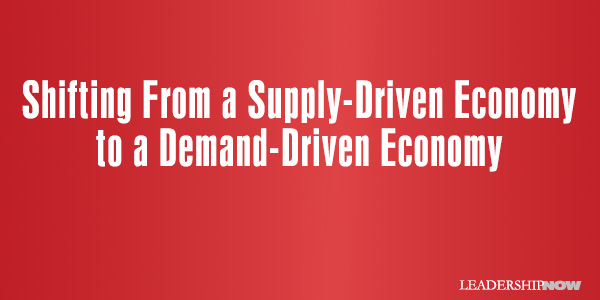 IT was always safe to assume the ever-expanding marketplace would consume everything we produced. But the economic downturn has brought to light, the shift from a supply-driven economy to a demand-driven economy. Authors Rick Kash and David Calhoun point out in How Companies Win that we “have now entered an era of oversupply.” ... Consequently, “organic growth and profitability become increasingly difficult to achieve.” At the same time, “it is imperative that you construct a framework in your company that encompasses and aligns everyone toward meeting not just the current but the latent and emerging demand of your highest-profit customers and consumers.”
IT was always safe to assume the ever-expanding marketplace would consume everything we produced. But the economic downturn has brought to light, the shift from a supply-driven economy to a demand-driven economy. Authors Rick Kash and David Calhoun point out in How Companies Win that we “have now entered an era of oversupply.” ... Consequently, “organic growth and profitability become increasingly difficult to achieve.” At the same time, “it is imperative that you construct a framework in your company that encompasses and aligns everyone toward meeting not just the current but the latent and emerging demand of your highest-profit customers and consumers.”
How Companies Win is a book about learning to understand demand. If you are relying on your customers to tell you what they want it’s too late. You’re playing at best a defensive game because they’ve already told your competitors as well. Getting ahead of the demand “whole it is still forming” is the key. Successful companies are looking at what the demand will be like tomorrow, next year, and five years from now. They get their cues, the authors report, in these ways:
This requires, of course, a new set of skills for leaders to understand the management of demand. Not that supply chain management is no longer needed, it just isn’t the decisive factor it once was, say the authors. To the four P’s of marketing—product, price, place and promotion—they add precision as an important factor in creating the alignment between what you sell and the customers demand. It goes beyond market segments—who is buying—to an analysis of the demand landscape—why customers are buying what they are buying; how they think about their purchasing decision. Society is guiding many innovations and is shaping industries. Businesspeople should keep a focus on demand. 
Posted by Michael McKinney at 04:18 PM
11.22.10

The 7 Habits of Highly-Performing CIOsSpecialization often gets us noticed in the workplace, but to deliver on the promise of that knowledge requires leadership. And that’s a different mindset. In The CIO Edge, authors Graham Waller, George Hallenbeck and Karen Rubenstruck, look at the challenges facing the chief information officer. It’s a another case of what got you here won’t get you there. They write:Focusing on leadership and people skills—the “soft” things that many CIOs tend to minimize in their quest to keep up with their day-to-day responsibilities of managing IT—is in fact the biggest determinate of their success, or failure.In other words, your job is to deliver results through your ability to influence people. As CIO you will ultimately fail is you can’t inspire others to get the right work done. You can’t do it alone. They have found that the highest performing CIOs have these seven traits in common:
Business acumen is an incredibly important trait to possess. There isn’t anything you do in corporate IT that you can’t buy somewhere else.As CIO, what matters is “understanding that your number-one job isn’t mastering the technology. It is providing collaborative, participative leadership through which you can create the relationships, commitments, shared visions, and common purpose that enable success.” Leadership amplifies your value.
Posted by Michael McKinney at 12:46 AM

Kevin Eikenberry's Best Leadership Blogs of 2010 To promote his upcoming book From Bud to Boss: Transition to Remarkable Leadership (February 15, 2011), Kevin Eikenberry is running a Best of Leadership Blogs 2010 poll from now until December 15, 2010. This year eleven great blogs have agreed to participate: To promote his upcoming book From Bud to Boss: Transition to Remarkable Leadership (February 15, 2011), Kevin Eikenberry is running a Best of Leadership Blogs 2010 poll from now until December 15, 2010. This year eleven great blogs have agreed to participate:
Leading Blog - Building a Community of Leaders by Michael McKinney Three Star Leadership Blog by Wally Bock N2Growth by Mike Myatt Great Leadership by Dan McCarthy All Things Workplace - Steve Roesler Lead by Example by John Baldoni Leading Questions by Ed Brenegar Ramblings From A Glass Half Full by Terry Starbucker LeaderTalk by Becky Robinson Extreme Leadership by Steve Farber Leadership Freak by Dan Rockwell By taking the time to vote, you will receive an invitation to Eikenberry’s free, online Bud To Boss Community. It is a free resource site with tips and techniques on handling the transition from peer to supervisor and other leadership challenges. There will also be random drawings each week for various prizes for those who have voted. So vote early and thank you for the support! 
Posted by Michael McKinney at 12:32 AM
11.18.10

Do You Have Leadership Lock-in?As individuals, familiarity breeds cognitive lock-in. We experience cognitive lock-in whenever we choose to do something out of habit even when objectively better alternatives exist. We behave automatically rather than intentionally.This impacts us as leaders too. It develops a kind of leadership lock-in. We get so locked-in to the values, beliefs, behavioral norms, habits and routines that it is hard to lead intentionally—the way we know we should—the way we want to. We just go through the motions of leadership without really thinking about what we are doing or the long-term consequences of our actions. Instead of adapting and learning, we plow ahead with behaviors that we are comfortable with. The more we behave or think in a certain way, the less likely it is that we will do anything to change it, even when we can see that it is not serving us well. Instead of “learning” from experience, we really only “see” from experience the effects of our behavior. Learning is an action step. But leadership lock-in contributes to our desire to avoid the effort needed to change our behavior in a way that would get us the results we truly seek. To escape the old, locked-in behaviors, we must consciously practice what we have learned until it reaches a critical mass—until feedback reinforces/rewards that new behavior—and it becomes self-sustaining. The comforting feel of immediate gratification plays into much of the problem presented by leadership lock-in. For example, self-serving behaviors, emotional outbursts, expediency, unrealistic pacing, and control issues, all give us immediate—momentary—gratification, but in the end, masks the long-term consequences of such behavior and thinking. And we get locked-in to what we think is working or more likely, is only working for us. Leadership lock-in is at odds with sustainable leadership. That’s why it has been estimated that well over half of leaders don’t finish well. They get tripped up by their own thinking. The cumulative impact of their behavior derails them and eventually neutralizes their influence. Escaping leadership lock-in begins with asking yourself, “Do I believe in this approach? Is this how I would want to be treated? Is what I am saying or doing expressing the values I believe in?”
Posted by Michael McKinney at 11:14 PM
11.16.10

Decision Points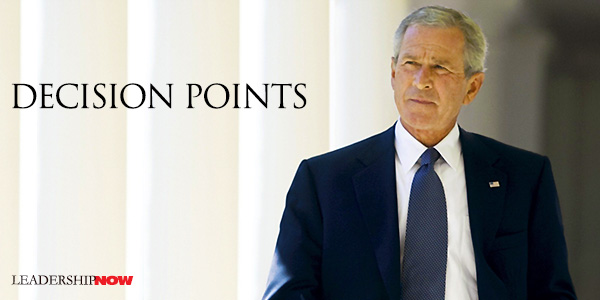
LEADERSHIP matters because we have choices. Leaders expose our choices and provide depth to our horizons. It is fitting that President George W. Bush’s book is about choices. The world changed after 9/11 and became increasingly uncertain and lacking precedent. While not intended to be an exhaustive biography, Decision Points does describe what it was like for George W. Bush to serve as president. More importantly, it is an account relating how he made the key decisions he made during his presidency. He writes, “Throughout the book, I describe the options I weighed and the principles I followed. I hope this book will give you a better sense of why I made the decisions I did. Perhaps it will even prove useful as you make choices in your own life.” Whether you agreed with him or not, it is enlightening to see the issues from his point of view. A point of view most of us will never have. It reminds me of a line from the TV series 24 by Noah Daniels the acting President of the United States, “You know Tom, it’s easy to think you’ve got all the answers when none of the ultimate responsibility lies with you. But sittin’ in this chair.… Until you sit in this chair, you don’t know anything.” President Bush covers among other things, in nearly 500 pages, the decision to quit drinking, stem cell research, 9/11, Afghanistan, Iraq, the Surge, counterterrorism programs, Katrina, his freedom agenda, and the financial crisis. Reflecting on his eight years, he writes, “After the nightmare of September 11, America went seven and a half years without another successful terrorist attack on our soil. If I had to summarize my most meaningful accomplishment as president in one sentence, that would be it.”Here are several excerpts: • In the presidency, there are no do-overs. You have to do what you believe is right and accept the consequences. • Quitting drinking was one of the toughest decisions I ever made. Without it, none of the others that follow in this book would have been possible. Yet without the experiences of my first forty years, quitting drinking would not have been possible either. • The summer of 2006 was the worst period of my presidency. I thought about the war constantly. … Most of all, I thought about our troops. I tried to imagine how it would feel to be a twenty-year-old on the front lines, or a military mom worrying about her son or daughter. The last thing they needed to hear was the commander in chief whining about how conflicted he felt. • One of my favorite books is the fine historian David McCullough’s biography of President Harry Truman. I admired Truman’s toughness, principle and strategic vision. “I felt like the moon, the stars, and all of the planets had fallen on me,” he said when he took office suddenly in the final months of World War II. Yet the man from Missouri knew how to make a hard decision and stick by it. He did what he thought was right and didn’t care much what the critics said. • That is the nature of the presidency. Perceptions are shaped by the clarity of hindsight. In the moment of decision, you don’t have that advantage. • One of the lessons I took from [Theodore] Roosevelt and Reagan was to lead the public, not chase the opinion polls. I decided to push for sweeping reforms, not tinker with the status quo. • Self-pity is a pathetic quality in a leader. It sends such demoralizing signals to the team and the country. …In the presidency, as in life, you have to play the hand you’re dealt. • The nature of the presidency is that sometimes you don’t choose which challenges come to your desk. You do decide how to respond. … As I hope I’ve made clear, I believe I got some of those decisions right, and I got some wrong. But on every one, I did what I believed was in the best interests of our country. Regarding Iraq, Bush writes, “Years from now, historians may look back and see the surge as a foregone conclusion, an inevitable bridge between the years of violence that followed liberation and the democracy that emerged. Nothing about the surge felt inevitable at the time.” It’s easy to overlook the thought that lead to the decisions made. Of Related Interest: 
Posted by Michael McKinney at 02:12 AM
11.12.10

30 Surprising Facts About George Washington IN Washington: A Life, Ron Chernow calls Washington “the most famously elusive figure in American history.” In 928 pages—the longest single-volume biography of Washington ever published—Chernow wants to render George Washington real and credible. And he succeeds. Chernow offers these facts about George Washington. 
Posted by Michael McKinney at 05:50 PM
11.11.10

Train Yourself to Succeed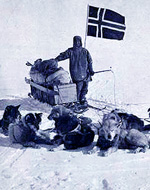 Adventure or drama, as it is used here, indicates a lack of “definite and rigorous professional preparation.” You manage uncertain times with preparation. Survival in uncertain times is made more likely by developing oneself. Grow both the breadth and depth of your thinking. Build your portfolio of experience. Build your knowledge for adaptability. Build your connections for exposure and to reveal possibilities. Tom Hopkins states the idea well in Selling in Tough Times Tom Peters wrote today on Twitter, “I think there is an incredible and widespread failure to take responsibility for oneself.” How well you learn, how well you prepare to respond to what comes your way, will determine your “luck.” In the end, it’s all up to you.
Posted by Michael McKinney at 10:36 PM
11.08.10

Congratulations, You’ve Reached the Next LevelYou’ve moved up to the next level. You’ve been promoted to the executive ranks. “You should be uncomfortable,” says Scott Eblin in The Next Level. “If you’re not, you are probably underestimating what’s ahead of you.” Statistically, many do. As high as 40% of new executives fail within the first eighteen months of being named to their positions.New positions carry with them greater expectations even if those expectations are not clearly stated. You are left to navigate uncharted territory. The single most important thing to remember is that what got you there may not serve you well in your new position. Going to the next level says Eblin, is “about developing consciousness around what is and isn’t serving you as you take those steps. It’s about retaining what is working, staying open to picking up new skills and mind-sets, and having the courage to let go of the behaviors and beliefs that brought you this far when they no longer serve you on your journey.” Eblin has developed an Executive Presence model that focuses on nine behaviors in three areas that a successful executive should develop on the one hand and drop on the other:
Eblin covers each of these behaviors in detail with insights, interviews, coaching tips and research. But in an important foundational chapter, he talks about grounded confidence. That is, add value but know what you are talking about. “It is critical for your success that you not dwell on thoughts and self-assessments that cause you to doubt your capacity to contribute. There is a certain amount of insecurity that comes with any new position, but “insecure people make lousy leaders.” Insecurity causes us to behave in a lot of counterproductive ways: indecisiveness, micromanaging and control, taking undeserved credit and passing blame, lack of teachability. Eblin says that developing strong relationships with your peers is essential to your success. “Your success in managing relationships will stem from the confidence you have in yourself and your ability to work well with others to make things happen.” This is an area where you need to move quickly. Your new role brings with it an expectation of your involvement in a wider range of issues. This means projecting confidence in your judgment that “extends beyond functional or technical knowledge.” This means also, more listening and less talking. Being teachable. Getting feedback. Of course, there is a lot of confidence to be gained by being prepared—being intentional. Eblin’s approach is to begin with the end in mind. You need to consistently ask yourself two questions: “What do I want to accomplish?” “How do I need to show up to accomplish that?” Practicing new and unfamiliar behaviors can be uncomfortable and seem artificial, but executed repeatedly these behaviors will become ingrained into your character and make them your own. As Aristotle said, “We are what we repeatedly do. Excellence, then, is not an act but a habit.” Feedback Tip: Ask your colleagues this question—What’s your best advice for anyone who is working on team reliance versus self-reliance (or whatever your working on)? Experience shows that it’s useful to ask the question in this format instead of asking, for example—What should I do to be better at team reliance? Asking the question in a less personal way makes it easier for your colleagues to be candid in their feedback. The Next Level is an excellent coaching reference book that makes it an indispensable companion guide to any change in responsibility. Keep it handy and bookmark the Situations Solutions Guide that contains practical solutions to scores of situations that predictably occur in most executive careers.
Posted by Michael McKinney at 07:40 AM
11.02.10

Political Leadership and Compromise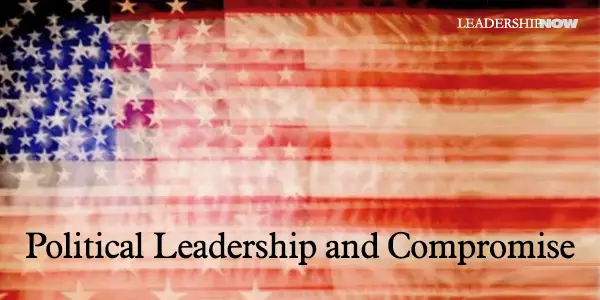
ON ELECTION DAY our minds turn to political leadership. Men and women are elected with the expectation that they will honor commitments they have made to the voters. This often leads politicians to take a short-term view of almost everything. At the same time, plagued by reality, a politician (or any leader for that matter) may find that they have to change direction or offer a compromise. This leads to the “disconnect” we frequently have with political leaders. The problem facing politicians is that reality doesn’t sell. (And of course, we play a hand in that.) So frequently, what gets them into office is not the approach that will get the job done. It is a dilemma all leaders face. It’s a dilemma that requires a certain degree of wisdom. Prudent flexibility, adaptability, and compromise are necessary qualities for leadership. Yet we often hold in high esteem leaders who don’t back down more than those that compromise their position. No one wants to be viewed as weak. But a leader that will not change or even listen to the need for change can cause irreparable damage. It’s easy to get lulled into a sense of our own permanence. We must remember that leadership is temporary. It is a sacred trust that we hold for only a short time. The skill is in understanding what one can be flexible about and what one should not. We should never compromise principles, but approaches (even the proper understanding of how those principles are applied) may need to be adapted. Values and approaches are distinct from universal laws and principles and are derived from them. The former may change; the latter never does. The fact too remains, that we may be wrong, our perceptions might be faulty and our assumptions may be without foundation. When faced with the facts, we need to be able to change direction and chart a new course without losing sight of the ultimate goals. Stefan Stern recently wrote in an excellent post on knowing when to shift your position: “If you are heading full speed ahead for the rocks it is time to change direction….Good leaders adapt to changed circumstances, and admit it when they have made a mistake.” In the introduction to Profiles in Leadership—an excellent collection of essays on leadership—biographer Walter Isaacson shares a historical perspective on compromise: The greatest challenge of leadership is to know when to be flexible and pragmatic, on the one hand, and when it is, instead, a moment to stand firm on principle and clarity of vision. Even the best leaders get this wrong sometimes. I learned this when writing a biography of Franklin. His instinct was to try to balance the conflicting values that were at issue during moments of tough debate and to find common ground. At the Constitutional Convention, he was, at eighty-one, the elder statesman. During that hot summer of 1787, the rivalry between the big and little states almost tore the convention apart over whether the legislative branch should be proportioned by population or with equal votes per state. Finally, Franklin rose to make a motion on behalf of a compromise that would have a House proportioned by population and a Senate with equal votes per state. “When the table is to be made, and the edges of the planks do not fit, the artist takes little from both, and makes a good joint,” he said. “In like manner here, both sides must part with some of their demands.” His point was crucial for understanding the art of true political leadership: Compromisers may not make great heroes, but they do make great democracies. 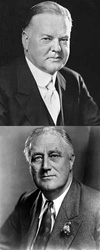 FDR on the other hand was not as well regarded and was mostly known for his connections and family background. “In the end, however,” writes Brinkley, “Herbert Hoover left the white house thoroughly discredited, repudiated, even hated, while Franklin Roosevelt was revered by much of the world when he died in office.” The difference was flexibility. Hoover was “A victim of his convictions, convictions that seemed to him close to absolute….Hoover’s unshakable principles shackled him time and again in his effort to deal with the Depression.” On the other hand, the quality that separated Roosevelt “most decisively from Hoover, was his pragmatic, experimental nature.” The contrast between Hoover and Roosevelt, Brinkley concludes, “suggests that leadership cannot succeed through ideals and strong convictions alone. The world is a complicated and ever-changing place, and a great leader must be capable of adapting to change and understanding the diversity of the ideas and principles that shape history.” Roosevelt was more successful in guiding the United States through the two greatest crises of the twentieth century, “in part because his values were appropriate to his time but also because he understood that values must reflect the realities of his age.” 
Posted by Michael McKinney at 10:21 AM
11.01.10

First Look: Leadership Books for November 2010Here's a look at some of the best leadership books to be released in November.




For bulk orders call 1-800-423-8273  Build your leadership library with these specials on over 160 titles. All titles are at least 40% off the list price and are available only in limited quantities.
Posted by Michael McKinney at 02:24 PM
|
BUILD YOUR KNOWLEDGE


How to Do Your Start-Up Right STRAIGHT TALK FOR START-UPS 
Grow Your Leadership Skills NEW AND UPCOMING LEADERSHIP BOOKS 
Leadership Minute BITE-SIZE CONCEPTS YOU CAN CHEW ON 
Classic Leadership Books BOOKS TO READ BEFORE YOU LEAD |
|